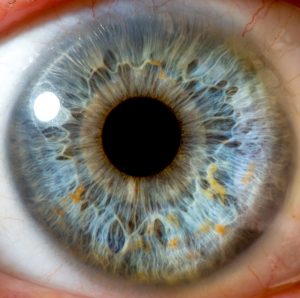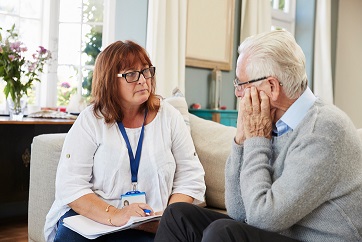By – James M. Katz, BA
Life coaching advice can cover a wide range of subjects including diabetes prevention and management. Living with diabetes can be challenging, but with the right support and guidance, it is possible to effectively manage the condition and lead a fulfilling life. One powerful tool that can aid in diabetes management is life coaching. Life coaching advice can provide individuals with the necessary tools and strategies to navigate the complexities of living with diabetes. In this blog post, we will explore the benefits of incorporating life coaching into diabetes management and how it can help individuals unlock their full potential in managing their health.

The article quoted below shows us one of the many ways life coaches advise others on how to prevent type 2 diabetes. It discusses a simple yet very effective way to combat it. Simply by walking at a faster pace, you can “out run” diabetes! For more, please review the article (Walking could lower your risk of type 2 diabetes, and your speed may affect how much, study finds) below.
“Previous studies have indicated that frequent walking was associated with a lower risk of developing type 2 diabetes in the general population, in a way that those with more time spent walking per day were at a lower risk,” said the study’s lead author Dr. Ahmad Jayedi, a research assistant at the Social Determinants of Health Research Center at the Semnan University of Medical Sciences in Iran.
Walking could lower your risk of type 2 diabetes, and your speed may affect how much, study finds. Rogers K., CNN
Updated 11:08 PM EST, Tue November 28, 2023“
Commentary:
Benefits of incorporating life coaching into diabetes management
Life coaching advice offers numerous benefits for individuals with diabetes. One of the key advantages is the personalized approach to diabetes management. A life coach works closely with individuals to understand their unique challenges and goals, helping them develop a customized plan to manage their diabetes effectively. This tailored approach ensures that individuals receive the support and guidance they need to make sustainable lifestyle changes and achieve their desired outcomes.
Another benefit of incorporating life coaching into diabetes management is the focus on holistic well-being. Diabetes is not just about managing blood sugar levels; it also involves maintaining a healthy lifestyle and managing stress. A life coach can help individuals develop healthy habits such as regular exercise, balanced nutrition, and stress-reduction techniques. By addressing these aspects of well-being, life coaching can contribute to overall improved health and diabetes management.
The role of a life coach in diabetes management
A life coach plays a crucial role in diabetes management by providing guidance, support, and accountability. They act as a trusted partner, working alongside individuals to identify their goals, explore their motivations, and develop strategies for success. A life coach helps individuals uncover their strengths and build resilience, empowering them to take control of their diabetes management.
One of the key responsibilities of a life coach is to help individuals set goals and create an action plan. With their expertise in goal setting and action-oriented strategies, life coaches can guide individuals in defining realistic and achievable goals related to their diabetes management. They assist in breaking down these goals into smaller, manageable steps, ensuring that individuals stay on track and make progress towards their desired outcomes.

Setting goals and creating an action plan with a life coach
Setting goals is an essential component of effective diabetes management. With the help of a life coach, individuals can identify specific goals related to their health, such as achieving target blood sugar levels, losing weight, or improving fitness. A life coach can assist in setting realistic timelines and creating an action plan to achieve these goals.
When setting goals, it is essential to make them specific, measurable, attainable, relevant, and time-bound (SMART). For example, instead of setting a vague goal of “improving blood sugar control,” a life coach can help individuals define a SMART goal like “maintaining blood sugar levels within the target range of 80-130 mg/dL before meals and below 180 mg/dL after meals, every day for the next three months.” This specific goal provides clarity and enables individuals to track their progress effectively.
Developing a positive mindset and overcoming obstacles
Living with diabetes can often lead to negative emotions such as frustration, guilt, and anxiety. A life coach can help individuals develop a positive mindset, empowering them to overcome these challenges and embrace a more optimistic outlook. By focusing on strengths and celebrating small victories, a life coach can help individuals build resilience and navigate the emotional rollercoaster that often comes with diabetes management.
Additionally, a life coach can assist individuals in identifying and overcoming obstacles that may hinder their progress. Whether it’s addressing self-limiting beliefs, overcoming fear of failure, or finding strategies to manage stress, a life coach provides the necessary support and guidance to help individuals overcome these barriers. By reframing obstacles as opportunities for growth, a life coach can empower individuals to turn setbacks into steppingstones towards success.
Implementing healthy habits and lifestyle changes
Developing and implementing healthy habits is key to effective diabetes management. A life coach can provide individuals with the necessary tools, strategies, and accountability to make sustainable lifestyle changes. Whether it’s adopting a balanced diet, incorporating regular exercise, or managing stress through relaxation techniques, a life coach can guide individuals towards healthier choices.
By working closely with a life coach, individuals can explore their current lifestyle habits and identify areas that require modification. A life coach can assist in developing personalized strategies to implement healthy habits, ensuring that individuals make gradual and lasting changes. With the support and guidance of a life coach, individuals can cultivate new habits that support their diabetes management goals and overall well-being.
Tracking progress and staying motivated with life coaching techniques
Tracking progress is essential in diabetes management. It allows individuals to monitor their achievements, identify areas for improvement, and stay motivated on their journey. A life coach can introduce various techniques and tools to help individuals track their progress effectively.
One such technique is journaling. By keeping a daily journal of food intake, exercise, blood sugar levels, and emotions, individuals can gain valuable insights into their diabetes management. A life coach can guide individuals in analyzing these records and identifying patterns, enabling them to make informed decisions and adjustments to their diabetes management plan.
Furthermore, a life coach can utilize visualization and affirmation techniques to help individuals stay motivated. Visualizing success and affirming positive beliefs can strengthen individuals’ commitment to their diabetes management goals and increase their confidence in achieving them. A life coach can provide individuals with personalized visualization exercises and affirmations tailored to their specific needs and aspirations.

Life coaching tools and resources for managing diabetes
In the digital age, there are numerous life coaching tools and resources available to support individuals in managing their diabetes. These tools can enhance the effectiveness of life coaching advice and provide individuals with additional support between coaching sessions.
One such resource is mobile applications specifically designed for diabetes management. These apps can help individuals track their blood sugar levels, log food intake, monitor physical activity, and even provide reminders for medication. Additionally, some apps offer educational resources, meal planning guidance, and community support, fostering a sense of connection and empowerment.
Other valuable resources include online forums and support groups dedicated to diabetes management. These platforms allow individuals to connect with others who share similar experiences, exchange tips and advice, and gain inspiration from success stories. By participating in these communities, individuals can find encouragement, motivation, and a sense of belonging in their diabetes management journey.
Finding a qualified life coach for diabetes management
Finding a qualified life coach for diabetes management is crucial to ensuring the effectiveness of the coaching relationship. When seeking a life coach, it is essential to consider their credentials, experience, and specialization in diabetes management. Look for certifications from reputable coaching organizations and inquire about their experience working with individuals with diabetes.
Additionally, take the time to interview potential life coaches to assess their coaching style, communication skills, and compatibility with your personality and needs. A good life coach should be empathetic, supportive, and able to create a safe environment for open and honest discussions. Trust your instincts and choose a life coach who resonates with you and inspires confidence in their ability to guide you towards effective diabetes management.
Conclusion: Embracing the power of life coaching in diabetes management
In conclusion, life coaching advice holds tremendous potential for individuals managing diabetes. By incorporating life coaching into diabetes management, individuals can benefit from a personalized approach, holistic well-being, and the support of a trusted partner. Life coaching can help individuals set goals, develop a positive mindset, implement healthy habits, track progress, and overcome obstacles. With the abundance of life coaching tools and resources available, individuals can find additional support and guidance in managing their diabetes effectively. Ultimately, embracing the power of life coaching can help individuals unlock their full potential in managing their diabetes and living a fulfilling life.
If you’re a healthcare professional and would like to learn more about health / life coaching, we offer an online certification program in Healthcare Life Coaching. For more details please go here.
References:
US Bureau of Labor Statistics – Life Coaching
National Library of Medicine – Can Life Coaching Improve Health Outcomes
Additional Resources:
Effectiveness of Health Coaching in Diabetes Control and Lifestyle Improvement: A Randomized-Controlled Trial. Lin C-L, et al. Nutrients. 2021; 13(11):3878.
Effect of Diabetes Health Coaching on Glycemic Control and Quality of Life in Adults Living With Type 2 Diabetes: A Community-Based, Randomized, Controlled Trial. Diana Sherifali, et al. Canadian Journal of Diabetes, Volume 45, Issue 7, 2021, Pages 594-600, ISSN 1499-2671
Understanding how different mechanism of life coaching offered to young adults with type 1 diabetes can improve their ability to see opportunities and overcome barriers. Jette Ammmentorp, et al. Patient Education and Counseling, Volume 103, Issue 3, 2020, Pages 544-548, ISSN 0738-3991
Electronic Health Lifestyle Coaching Among Diabetes Patients in a Real-Life Municipality Setting: Observational Study. Komkova A, et al. JMIR Diabetes 2019;4(1):e12140 DOI: 10.2196/12140

 Written by Veronica Turner
Written by Veronica Turner Written by Veronica Turner
Written by Veronica Turner Written by Veronica Turner
Written by Veronica Turner



 Written by Sam Darwin
Written by Sam Darwin
 Written by Sam Darwin
Written by Sam Darwin


